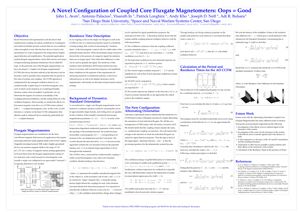 |
||||||||
 |
 |
 |
 |
 |
| Intelligent Sensor Networks: Coupled Core Fluxgate Magnetometers, a New Device Configuration | ||
|
Here we investigate an extension to work that
has been performed on a nonlinear device known as a sensor. This
devices is the Coupled Core Fluxgate Magnetometer, or CCFM. This
device, and others classifiable as sensors are modeled as possesing
a bistable potential. Additionally, they possess a specific characteristic:
in the presence of an external signal (to be detected) the signal,
or evolution of the system, will spend a greater, disproportionate,
amount of time in one well compared the time spent in the other
well. This allows the use of a time-domain detection scheme known
as Residence Time Detection. With Residence Time Detection the external
signal is quantified by either the absolute difference in time that
the evolution spends in one well versus the other, or by the magnitude
of the maximal ratio of the times spent in the two wells. We present,
in
| ||
|
what follows, a deterministic analysis of this
characteristic, as well as of the dynamics, of a new arrangement
of the devices. This new arrangement cam from what one may call
an experimental mishap and has lead to a scalably large increase
in the sensitivity of the CCFM under the new arrangement.
|
||
| • Other Abstracts • | ||
